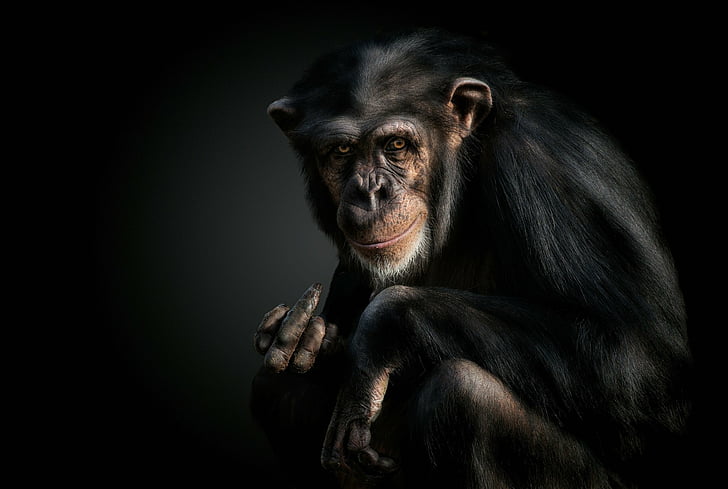

All subjects lived in a group together at the Great Ape Research Institute, Hayashibara Biomedical Laboratories, Inc., Japan, in an enriched environment consisting of a 7400 m 2 outdoor enclosure and several indoor areas .The group consisted of Loi (male, 10 years old), Zamba (male, 10 years old), Tsubaki (female, 10 years old), Mizuki (female, 9 years old) and Misaki (female, 7 years old note that these data refer to age at the start of the test period). Each chimpanzee watched five repeats of each of the eight conditions.įive chimpanzees ( Pan troglodytes) participated in this study. These included: a live self-video a 1 s delayed self-video a 2 s delayed self-video a 4 s delayed self-video a distant past video (more than one week old) showing the subject with stickers on the face and head a distant past video (more than one week old) of the subject with no stickers on the face or head a video of a human with stickers on the face and head and a video of a human with no stickers on the face or head. Following a 2 min observation period during which no image was shown on the monitor, one of eight types of video was then presented on the monitor for 2 min. We tested five chimpanzees in experimental sessions beginning with the placement of 10 stickers on the head or face of a fully awake chimpanzee. The aim of this study was to explore the reactions of chimpanzees to their delayed self-image. In this study, we tested chimpanzees' reactions to live and 1–4 s delayed images along with additional control videos, which lacked a link to their current state.

That study on children indicates that comprehending a few seconds' delay is a critical factor for developing self-recognition. One study reported that 3-year-old human children, during the transition from live self-recognition ability to the capacity for delayed self-recognition, do not remove stickers from the head while viewing 2 s delayed images of themselves, but do so while watching live or 1 s delayed self-images . This study used a modified version of the classic mark test to determine whether chimpanzees could remove stickers placed on their face and head while watching live and delayed video images.

Thus, there is no clear evidence that recognition of delayed self-image occurred in these studies. However, differences in viewing time and the ability to discriminate between images do not necessarily imply self-recognition. Chimpanzees were able to discriminate between cursor movements on a computer monitor caused by real-time self-action and those caused by previously recorded self-action . Gorillas were also observed to show more interest in live videos compared with images recorded the day before . One study found that monkeys spent more time looking at live versus delayed video images of themselves . However, there is little evidence regarding whether animals can recognize themselves in images from different time periods. In addition, a similar concept of developmental asynchrony has been reported between self-recognition in mirrors and live videos , and more data are warranted to prove this theory.įrom a phylogenetic perspective, chimpanzees and other great apes have been shown to exhibit self-recognition in mirror studies , and this phenomenon has been reported in dolphins and elephants . However, there has been no evidence to confirm this theory, and factors that are not specific to self-recognition might be involved in this developmental asynchrony . An extension of this theory is that delayed self-recognition is linked to autobiographical memory and that both delayed self-recognition and manifestation of autobiographical memory develop at almost the same time in human children, at around 4 years of age . One theory holds that while self-recognition in a mirror requires a self-concept limited to the present time and location, delayed recognition requires a ‘self-concept proper’ in which one's sense of identity extends across time and space, which develops somewhat later than the ability for live self-recognition . Previous works have debated the developmental asynchrony of live and delayed self-recognition. Human infants begin to show self-recognition in mirrors from 18 to 24 months but do not exhibit self-recognition in delayed video images for another 2 years. The ability to recognize one's own appearance is assumed to be a proxy for complex psychological processes such as self-awareness and the concept of self .


 0 kommentar(er)
0 kommentar(er)
